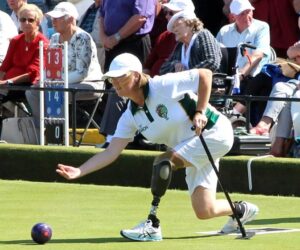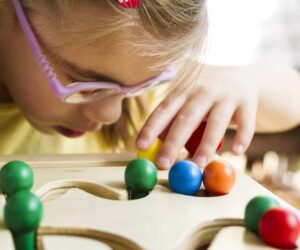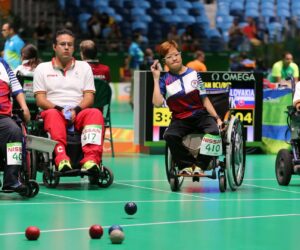Showdown was designed in 1977 for people with a visual impairment and it is a sport that could be played recreationally and/or competitively without sighted assistance.
The equipment Showdown needed is the specially designed table, two bats, a particular ball with sound, and a special glove for the batting hand and opaque eye protection. The sound produced by the ball rolling on the table indicates the location of the ball during the game.
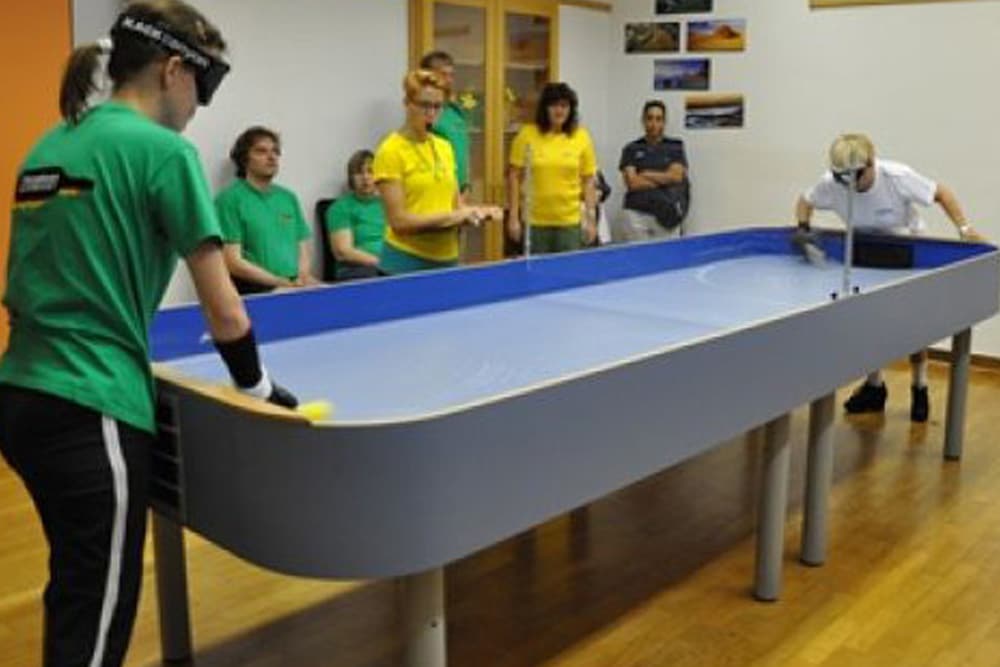
Two players play the game on a rectangular table with a centerboard screen and goal pockets on either short sides. The objective of the game is to bat the ball across the table, under the centerboard screen, into the opponent’s goal, while the opponent tries to prevent this from happening. The Showdown players have to wear eye protection, to ensure that they won’t be able to see the ball. Play is always initiated with a serve.
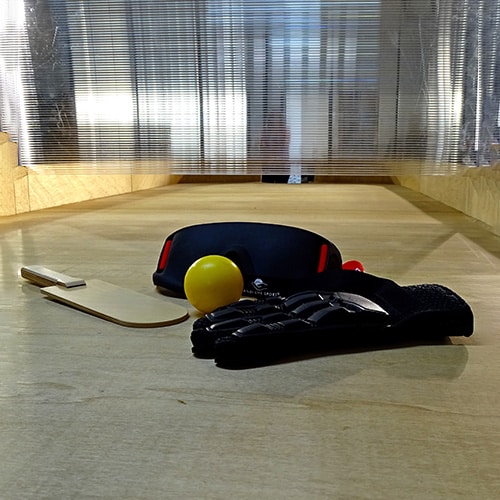
To serve correctly, players must hit the ball so that it bounces off the sidewall of the table exactly once, before passing under the center screen. If not performed correctly, 1 point will be awarded to the opponent. Each player serves two times in a row.
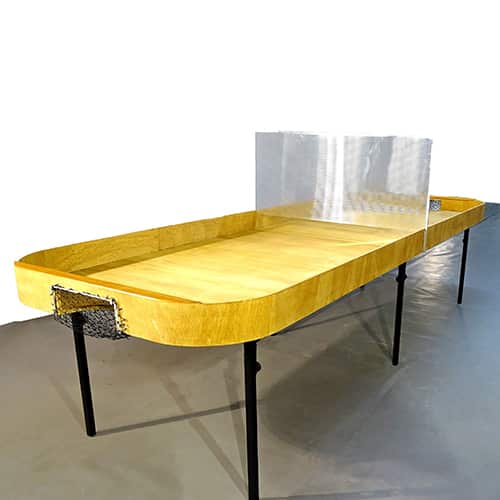
A player scores two points for a goal and one point when their opponent hits the ball into the screen, hits the ball off the table, touches the ball with the bat or the batting hand within the goal area, moves the ball with anything but the bat, or traps or stops the ball for more than 2 seconds, making the ball inaudible for the opponent. One point is also awarded to the opponent if a player touches his or her eye protection without first asking permission.
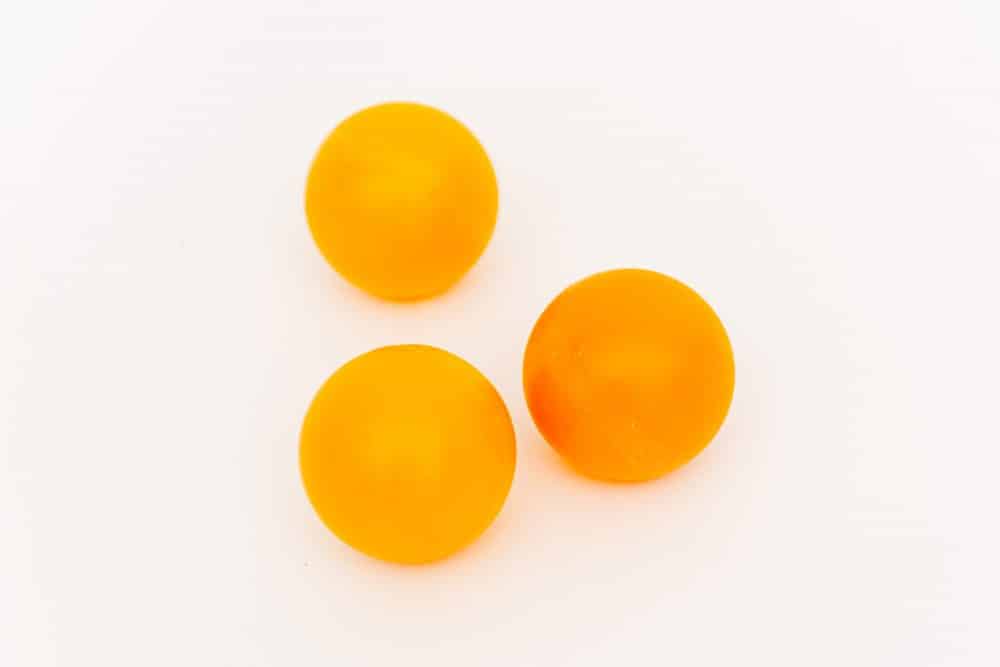
Matches are usually played in 3 sets, best of 2 wins. The first player to reach 11 points, leading by two or more points wins the set. The exceptions are semifinals and finals where the best of 3 sets wins. Players will change sides after each set in match play. In the last set of the match, the players will switch sides after 6 points are scored by one player or after half of the stop time has expired. Spectators must be quiet during play so as not to interfere with the players’ ability to hear the ball. Cheering is, however, allowed after the referee has whistled.

